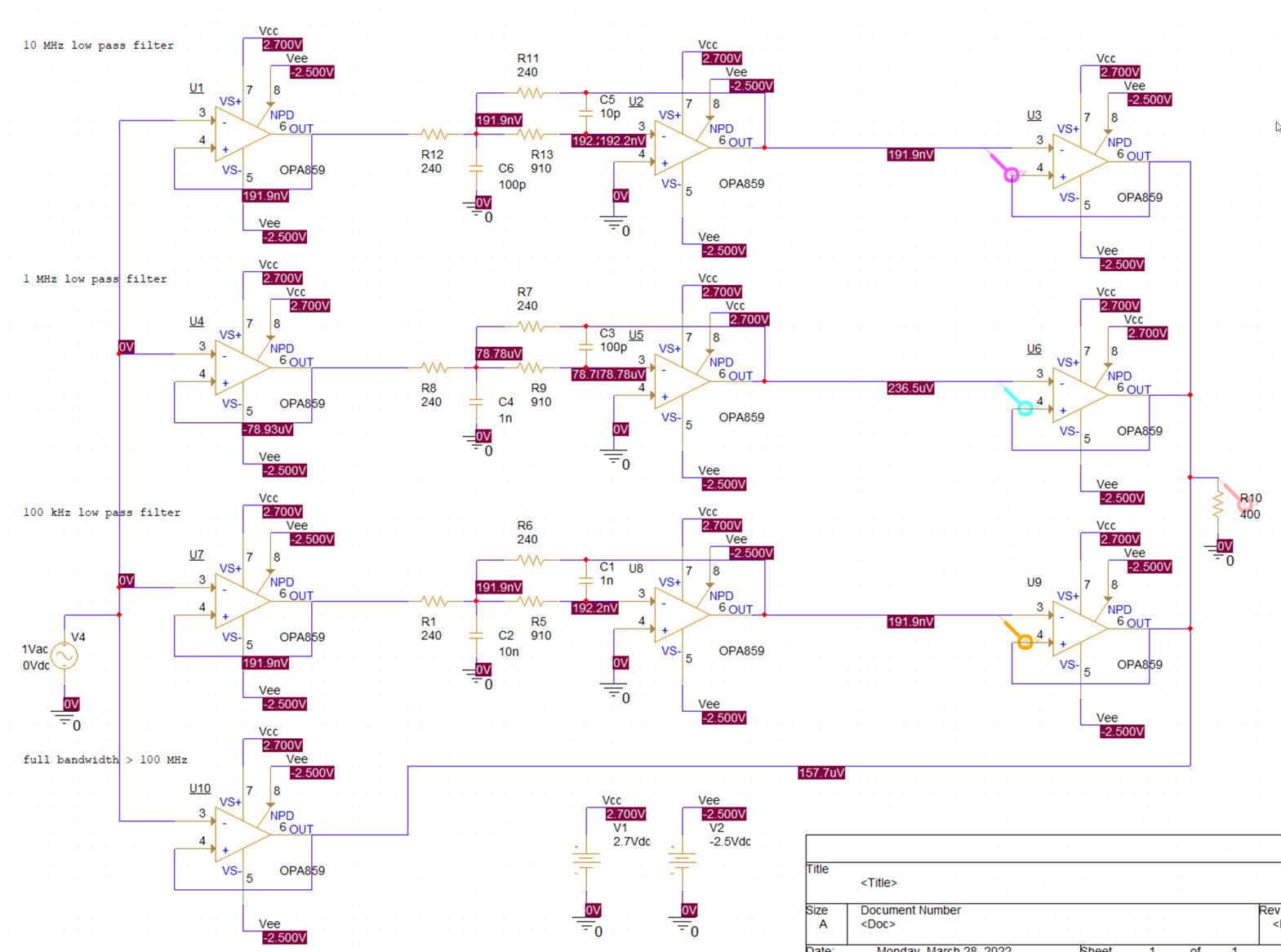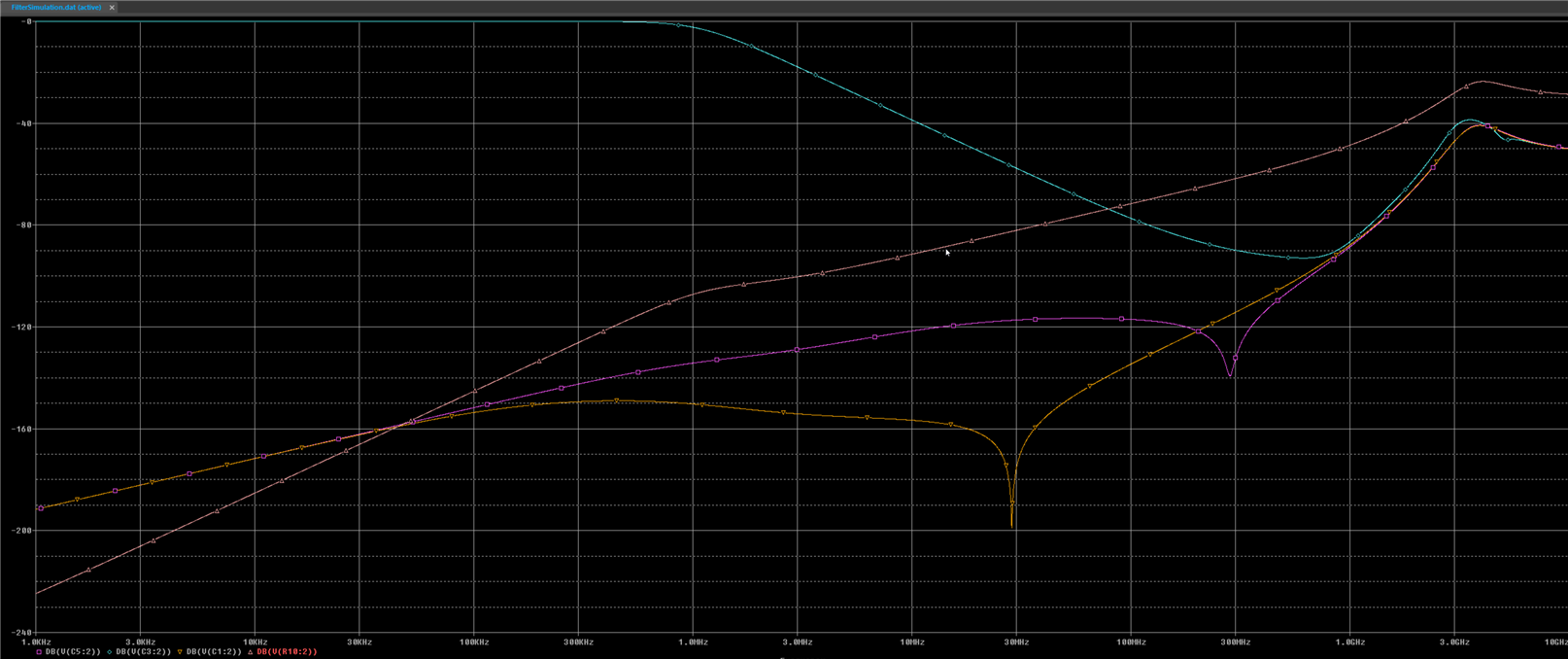Other Parts Discussed in Thread: OPA859, OPA857, OPA855, OPA2837, OPA837, TMUX1109
For test and measurement purposes, a design with switchable gain (x1, x10 and x100) and switchable filter (100 kHz, 1 MHz, 10 MHz, full [>100 MHz])
with high flatness (<= 0.1 dB) from DC to 100 MHz with limited area and power has to be designed.
The design will be supplied with +2.7 V and -2.5 V.
The input and output voltage is at least +-1V peak, higher output voltages up to +- 1.5V or even +-2.0V are welcome.
Currently, the design is in the concept phase.
To achieve the goal of eliminating the use of relays, the power-down feature of the OPA85x family will be used.
The attached schematic shows 4 parallel filter paths (10 MHz, 1 MHz, 100 kHz, and full bandwidth).
Each filter would finaly contain an OPA856 in its filter path at the input and at the output to disable the path.
When simulating with PSPICE for TI and using the OPA859 model, the following questions came up:
1. is this approach generally usable
or are there better approaches such as
a) switchable filter settings or
b) the use of multiplexers at input and output?
For an OPA6xx, I remember a recommendation in a datasheet not to use the OPA6xx in a similar configuration for multiplexing.
2. normally I would use the OPA856 as anopamp in the filter stages, but the PSPICE model of the OPA856 does not include a PD pin.
Is this correct and when will an OPA855, OAP856 and OPA857 model with PD be available?
3. in the simulation all outputs of the 4 filter paths are connected to a load resistor (R10, 400 Ohm).
Even if 3 filter stages are switched off (PD pin at -2.5V) and only the 1 MHz filter is activated
the output voltage of U6 (equal to the voltage at R10) does not follow the input voltage of U6.
It looks to me like the output of the deactivated operational amplifiers U3, U9 and U10 is not high impedance
but force the activated output of U6 down.
Does this behavior also occur in reality, or is it a limitation in the PSPICE model, and if so, when will it be fixed?






